In June 1957, the Scottish team Ecurie Ecosse claimed its second consecutive victory at the 24 Hours of Le Mans in a Jaguar D-type, giving the sports racer a third straight victory in the endurance contest for which it was essentially devised. Yet despite the D-Type’s unmitigated success, Jaguar was already at work in 1957 on a succeeding model, one that might serve as a production development mule or the basis of a GT-class racer. Clothed in a svelte aluminum body, the so-called E1A development car eventually blossomed into the production E-Type project, though a more dedicated race car dubbed the E2A followed by 1959.
By early 1961, Jaguar was beginning to deliver production E-Type roadsters to racing customers in advance of the model’s official debut at Geneva in March. This was intended to create a competition aura around the E-Type, even if it was merely a steel-bodied road car. With the idea of the open competition car gaining momentum, a memorandum was sent on March 16, 1961, from Jaguar engineering’s lieutenant director Claude Baily to Coventry’s production department. Under the name project no. ZP 537/24, the factory was instructed to proceed with the build of seven competition cars for which he listed specific modifications to the basic E-Type that were based on E2A.
These cars were to receive special engines with gas-flowed cylinder heads, polished and crack-tested connecting rods, a lightened flywheel, a competition crankshaft damper, modified clutch, a close-ratio competition 4-speed gearbox, and trumpet tips for the S.U. carburetors. Although the engine specifications were substantial, the body remained steel and the suspension was modified only with stiffer springs.
The first of these cars, chassis no. S850006, was delivered to John Coombs’ racing team, and the renowned Graham Hill achieved promising results with a third-place finish at Silverstone in May 1962, second at Mallory Park a month later, and fifth at Brands Hatch in August. Increasingly used as a factory development car, Coombs’ E-Type was further modified with a lighter-gauge steel body, and the engine received a “35/40º” wide-angle cylinder head like the ones used on the D-Types. The new competition car was showing tremendous potential until the Ferrari 250 GTO arrived, which quickly set the racing world on its head.
Formulation of the Lightweight
Receptive nevertheless to the challenge of competing with Maranello’s new thoroughbred, Jaguar moved a step further with the development of S850006, using it as the mold for 17 more competition cars. First entering the build process in October 1962, the racing E-Type also incorporated elements of an earlier works car known as the Low-Drag Coupe, for which Malcolm Sayers had revised his E-Type coachwork to feature a more aerodynamic roof and tail, including trailing exhaust vents.
The new cars were lightened with aluminum alloy bodies and an aluminum hardtop that strengthened the shell’s rigidity. The 3.8-liter competition engines were further upgraded with Lucas fuel injection and dry-sump lubrication, while the chassis was modified with a revised suspension geometry and myriad other competition parts.
Other than the development example, cars began numbering with S850659 and proceeded sequentially to S850669, all within the standard E-Type numbering. The only signifier of a Lightweight within the chassis number was the S prefix. As Jaguar didn’t intend to build enough cars for the Lightweight to be homologated separately, the model was passed off as part of the production E-Type family even though very few parts were shared, and it was never formally marketed or acknowledged in sales materials. The lack of factory marketing has only contributed to the model’s increased cachet over the decades, lending it a shroud of mystery.
The first two purpose-built Lightweights were completed in time for the 12 Hours of Sebring in March 1963, and team owners Briggs Cunningham and Kjell Qvale each acquired a car. While Bruce McLaren and Walt Hansgen finished 8th overall and second in class for Cunningham, Ed Leslie and Frank Morrill placed 7th overall and first in class for Qvale.
At the 24 Hours of Le Mans in June, Cunningham entered three Lightweights with official support from the factory. While the two cars respectively driven by Hansgen and Augie Pabst, and Roy Salvadori and Paul Richards each retired early, the car piloted by Bob Grossman and Cunningham, himself, finished 9th overall and second in class. One can only speculate how well the car might have finished were it not for a two-hour delay caused by a brake issue.
Results in non-endurance events during 1963 were even better, with four victories by Hill and a multitude of top-three finishes by Salvadori and Peter Sutcliffe at venues like Goodwood, Silverstone, Mallory Park, and Snetterton. In total, just 12 examples of the E-Type Lightweight were built, with production never actually reaching the original target of 18 cars.
Jaguar provided significant factory support for these cars, as they were sold exclusively to preferred customers and friends of managing director Frank “Lofty” England. Among the most celebrated racing sports cars to emerge from postwar Britain, where they were known as GTO Killers, the rare E-Type Lightweights have evolved into the centerpieces of significant private collections around the globe.
Jaguar E-Type Lightweight S850667
Chassis no. S850667 is the 10th example of the 12 E-Type Lightweights built. It benefits from a short chain of just three long-term caretakers, and displays phenomenal originality, having never been disassembled or rebuilt in any significant manner. Also, the winner of the 1963 Australian GT Championship, this car boasts nearly unparalleled overall quality among its Lightweight brethren.
As illustrated by a tremendous file of documentation, the story of S850667 begins with Robert “Bob” Jane, an ex-truck driver from Melbourne, Australia, who raced motorcycles and water-skied for pleasure. By the late 1950s, Mr. Jane had transitioned to sports car racing, becoming a dedicated proponent of Jaguars. He was a principal racing customer of Bryson’s in Melbourne, the official Jaguar importer Down Under.
Among other models, Bob Jane owned and campaigned a D-Type as well as a red production E-Type fixed head coupe that was a regular competitor on various tracks around Australia. Jane even bored out his D-Type engine to a full 4.2 liters, well before the factory eventually undertook similar developments. One of the continent’s most dominant competitors, Jane won the Bathurst 500 four years consecutively and reportedly took 38 straight victories in various Jags.
Mr. Jane was also in the tire business, the owner of a chain of stores known as the Bob Jane T-Marts. On November 29, 1961, Jane even became an official Jaguar importer under an agreement with Jack Bryson. The opening of his showroom on Sydney Road in Brunswick was congratulated with newspaper advertisements from companies in motorsports including Repco, Mobil, Lucas, and Bosch. With his rising accomplishments on Australian tracks, Jane was increasingly recognized by the factory’s competition department, as corroborated by correspondence.
Files from the archives of marque expert Terry McGrath demonstrate that Jane sent a letter to England in the summer of 1963, inquiring about the availability of the new lightweight competition E-Type. Jane would later claim the car was given to him by the manufacturer, but a paper trail illustrates an invoice to Bryson’s on Jane’s behalf, including £1,400 worth of competition preparation.
The factory provided a full 5-page specification sheet for S850667 with a dizzying array of competition features. Dated October 1, 1963, and including Jane’s name, the list specifies a 35/40º cast-aluminum cylinder head on the alloy block, which was numbered RA 1353-9S. The rare alloy motor was mated to a Jaguar close-ratio 4-speed competition gearbox. Additional features included a competition crankshaft damper, lightened flywheel, cast aluminum sump, oil pump, and water pump, and a Lucas fuel injection system. The frame was modified to make room for the new front suspension geometry and a larger oil tank.
Chassis modifications included a Thornton Tork-Lok differential with a 3.54:1 final-drive ratio, suspension mountings 25% stiffer than a standard E-Type, and 11¼ inch brake discs all around, with aluminum brake cylinders. The pedal gear was lightened and axles were mounted with light alloy disc wheels in the style of the D-Type. Suspension settings were adjusted with a modified rear set-up and anti-roll bars.
The completed car shipped for Australia on October 20, 1963, reaching Melbourne the following month. On December 8, the Lightweight debuted at the Calder track in Victoria, winning the Australian GT Championship race while setting a lap record of 51.8 seconds. A few weeks later at Catalina, S850667 won the Production Sports Handicap and the New South Wales Touring Car Championships, followed by the sports and touring car races at Warwick Farm (where it set another lap record), concluding a dominant first month in service.
In early 1964 Jane conducted a minor cosmetic modification to the exterior, painting a thin Shell-orange racing stripe along the hood to reflect his sponsorship from the oil company. The Lightweight then took the checkered flag at Calder on January 26, 1964, and at the Sandown A.G.P. meeting on February 9. At the end of the month, it finished second at the Australian Tourist Trophy while timed at 156 mph. Returning to Calder on March 8, the E-Type took second place, and then placed third at the New South Wales Sports Car Championship on March 29. The successful run continued at Sandown Park on April 19, where the E-Type set the fastest lap and placed third in the Victoria Sports Car Championship.
Around May 1964, Bob Jane and his brother Bill took the Lightweight to Europe, where they intended to test its mettle in long-distance continental events while stopping by the Brown’s Lane factory for a few upgrades. They also intended to socialize with Bruce McLaren on the Formula 1 scene.
Correspondence shows that Jane wanted to source a ZF 5-speed gearbox at Coventry, but because the ZF units were in short supply the factory declined to install one. The opportunity was taken, however, to add wider disc wheels and install a Le Mans-style 45-gallon fuel tank, surely appropriate for the immediate goals of running Monza, Rheims, Goodwood, and the Portuguese Grand Prix.
At Brands Hatch on July 11, Jane was able to finish 5th in class and 10th overall, but he later complained that an improper final-drive had rendered the car uncompetitive. He was apparently underwhelmed by the strict nature of support from the factory, which refused to undertake more aggressive modifications such as lowering the car’s ride height.
Chassis no. S850667 returned to Australia by the fall of 1964, though it would not race again until the following season. The Lightweight’s success resumed at Bathurst on February 21, 1965, where it was timed at 146.05 mph and established a fastest lap. On May 2, Bill Jane drove the E-Type at the One-Hour Production Car Race at Lakeside in Queensland, finishing third, and a week later the car finished first in both the preliminary and the main races at Bathurst. As the season wore on, the Lightweight found itself competing against far more purpose-built racecars like the rear-engine Lotus 23B. Despite the increasing competition, S850667 still managed a 4th-place finish at the Australian Tourist Trophy at Lakeside, where Bob Jane ran the car without a hardtop. The season concluded with additional runs at Warwick Farm, Lakeside, Sandown, and Longford, though no top finishes were recorded.
In 1966, Jane passed driving duties to Spencer Martin, and he won the GT race at Warwick Farm on September 18, setting another fastest lap. Martin then placed third at Sandown on October 16. Around this time Jane unfortunately blew out the original alloy engine block during practice, and this is probably the reason why he offered the car for sale in the publication Racing Car News, though it did not sell.
Further documentation from the McGrath archives shows that Bryson’s contacted the factory to source a replacement alloy block, even inquiring if one might be available with displacement greater than 3.8 liters. Brown’s Lane assured Jane that such displacements had not been satisfactorily tested, but they provided a correct factory alloy replacement block, no. V682558P, which continues to power the car to this day. It should be noted that it is extremely rare to encounter a Lightweight with an original alloy block, as most examples are today powered by reproduction units.
The end of the 1966 season basically concluded the E-Type’s racing career, and over the following few years it was exhibited as a display piece at Jane’s tire outlets. The car essentially remained unused for the next decade, and in November 1980 Bob Jane offered his cars publicly at the Australian Grand Prix auction. He would later comment that selling the Lightweight was the biggest regret of his life.
Cloistered Collectable
Chassis no. S850667 was then purchased for a shocking $80,000 AD by Peter Briggs, a Jaguar enthusiast from Western Australia who at various points owned a D-Type, an XK120, and an SS100. The new owner commissioned a re-finish in white with large blue racing stripes down the middle, and this is the only occasion the E-Type was ever repainted. Briggs raced the Lightweight a few times and occasionally drove it to his office, and the car was used by John Smith at the National Jaguar Rally event at Wanneroo in September 1984, again setting the fastest lap. In November 1985 and September 1986 the E-Type was presented at the historic events leading up to the Formula 1 Australian Grand Prix.
After nearly 20 years of ownership, Briggs offered the rare E-Type for sale in early 1999, consigning the car to an auction in Florida. In preparation for the sale, the Lightweight was submitted to the famed Lynx Engineering in England, perhaps the premier authorities on vintage racing Jaguar C-Types, D-Types, and E-Type Lightweights. According to their written evaluation, the experts at Lynx were amazed by the car’s originality, which included the factory-appointed leather seats, 4-speed close-ratio gearbox, and the 45-gallon Le Mans gas tank, as well as the original aluminum body.
Currently displaying less than 4,000 original miles, chassis no. S850667 has been fastidiously maintained by just three caretakers over the course of 53 years. All of the original stampings, body tags, and related rivets remain intact, and the car has never been disassembled or restored. Considering that the factory alloy engine-block replacement was supplied in period, and that the factory modifications such as the installation of the Le Mans fuel tank were undertaken during May 1964, this car is basically a time capsule of its configuration as raced by Bob Jane.
Possibly the most original Lightweight example in existence, this legendary Jaguar competition car is incredibly well documented, including race histories and photos, factory correspondence and spec sheets, the evaluation from Lynx Engineering, and numerous other records from the archives of Terry McGrath. S850667 offers marque aficionados and dedicated postwar sports car collectors the opportunity to acquire one of the most celebrated Jaguars ever built, one of the twelve legendary E-Type Lightweights, the wolves in sheeps’ clothing that proved to be GTO killers.
This 1963 Jaguar E-Type Lightweight Competition, chassis number S850667, sold for $7,370,000 at the Bonhams Scottsdale sale, held January 19, 2017 during Arizona Auction Week. Rick Carey had the following to say about the 1963 Australian GT Championship Winning Jaguar:

[Source: Bonhams; photos: Pawel Litwinski]





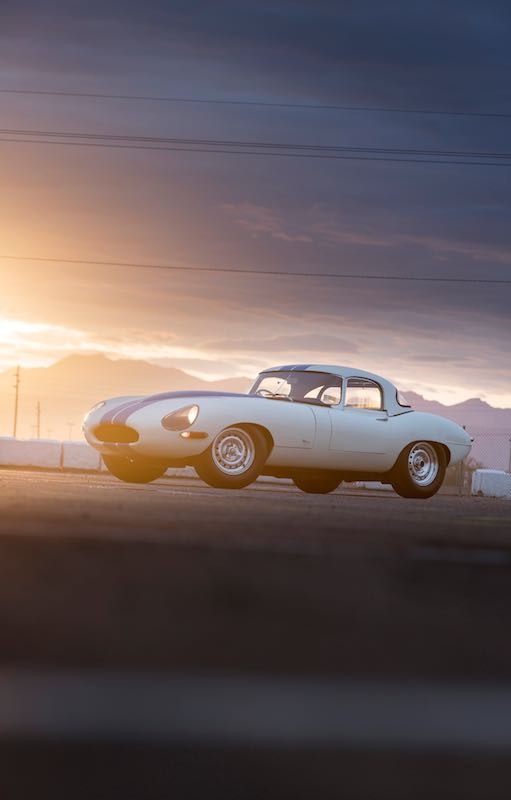

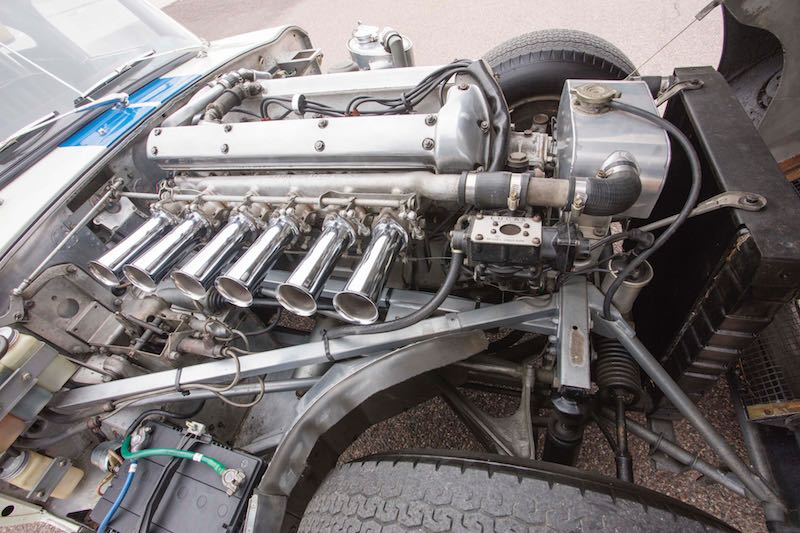
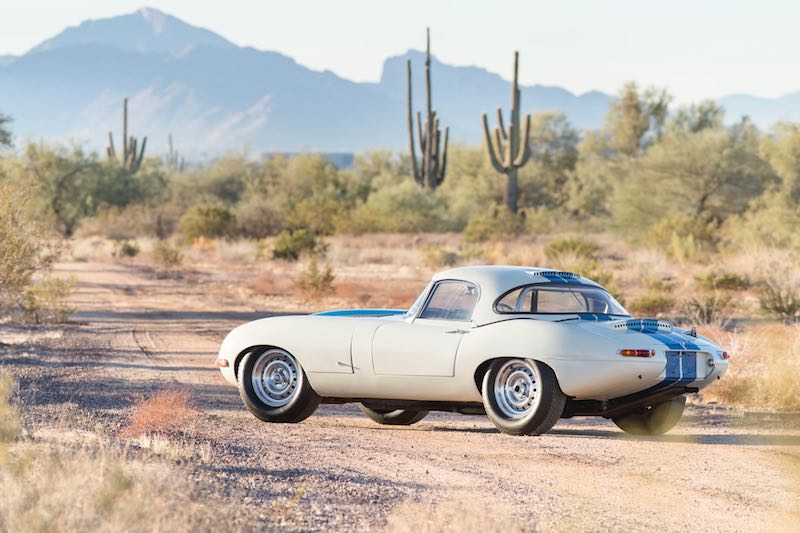
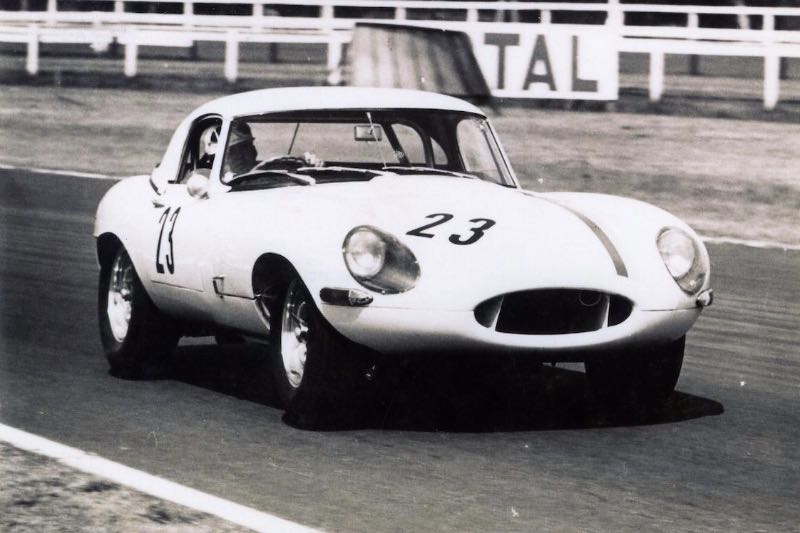
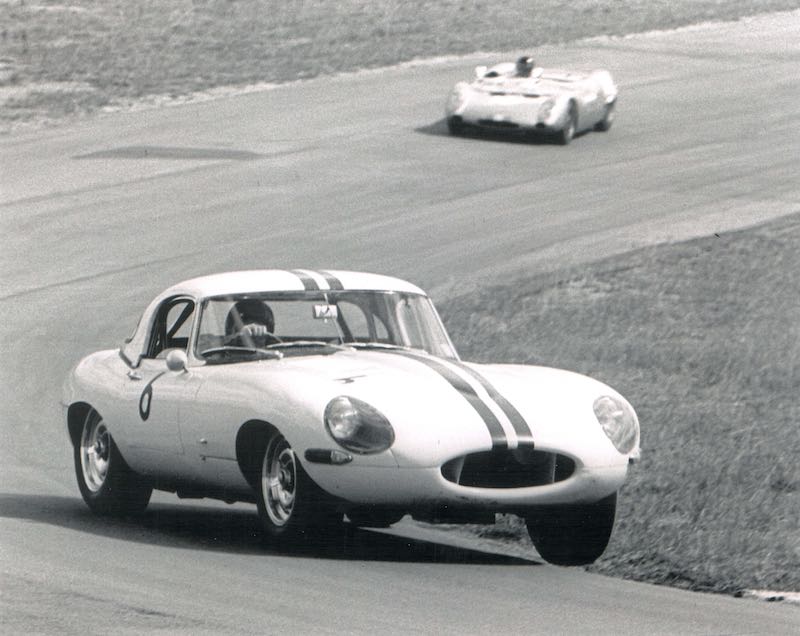
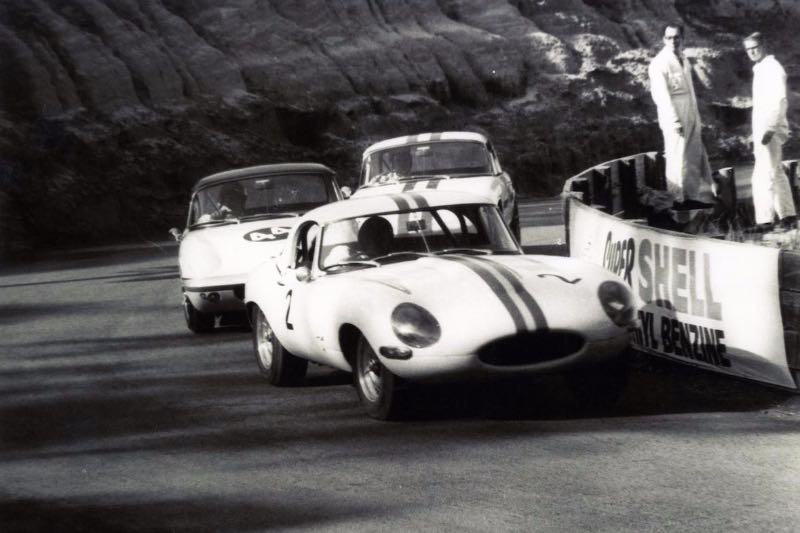



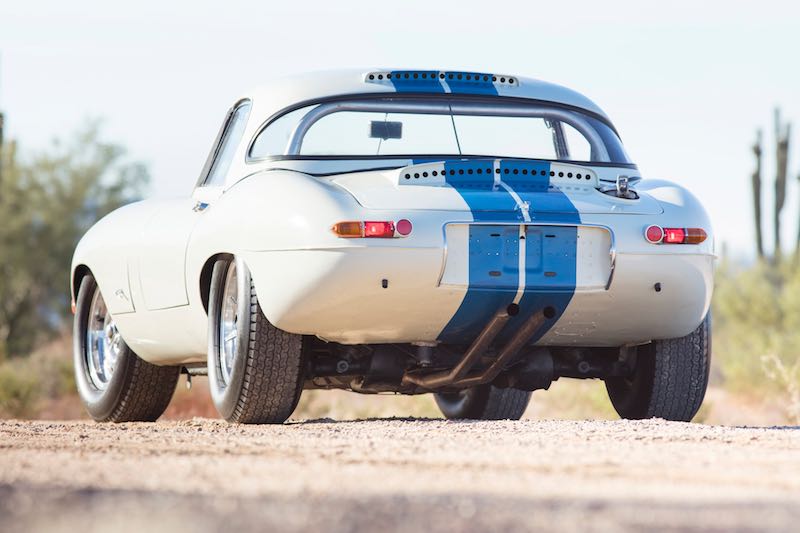
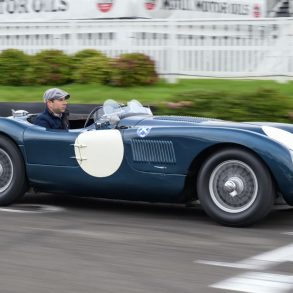
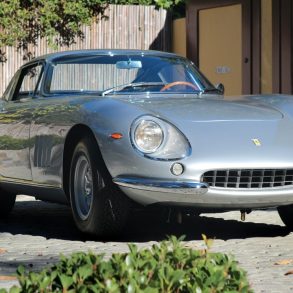





Great article on the Bob Jane Lightweight E-Type. But a couple of mistakes about Bob. He was never a truck driver & he didn’t race motorcycles. He did race bicycles. His first business was on making car seat covers but he got into used cars & progressed to be the biggest General Motors dealer in the Southern Hemisphere.